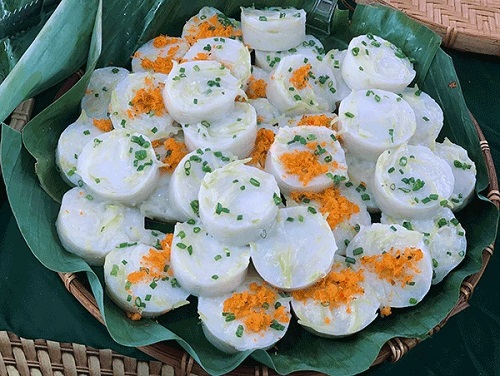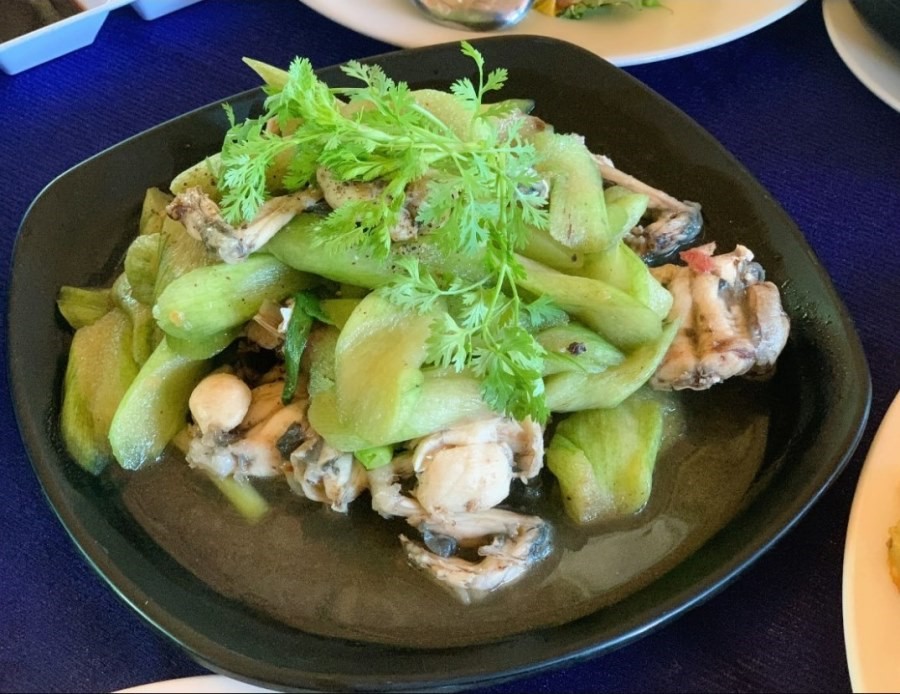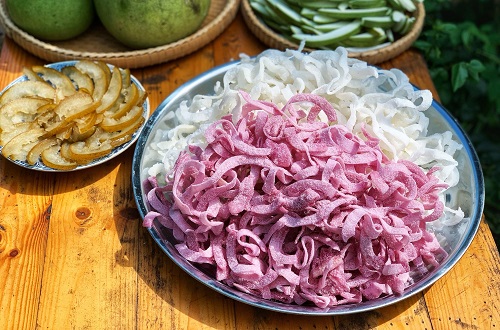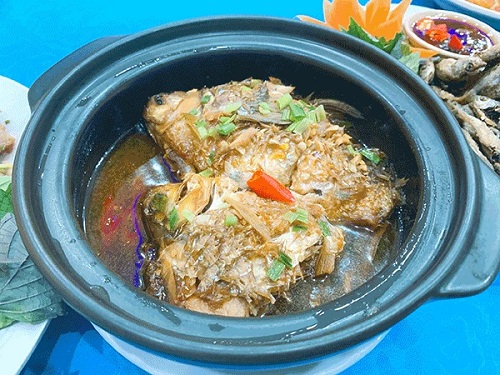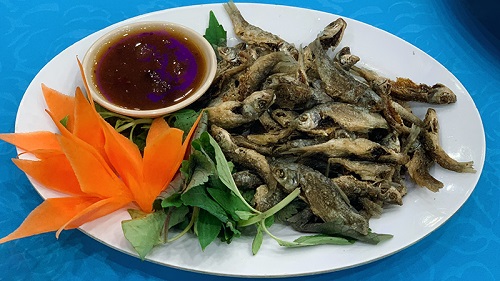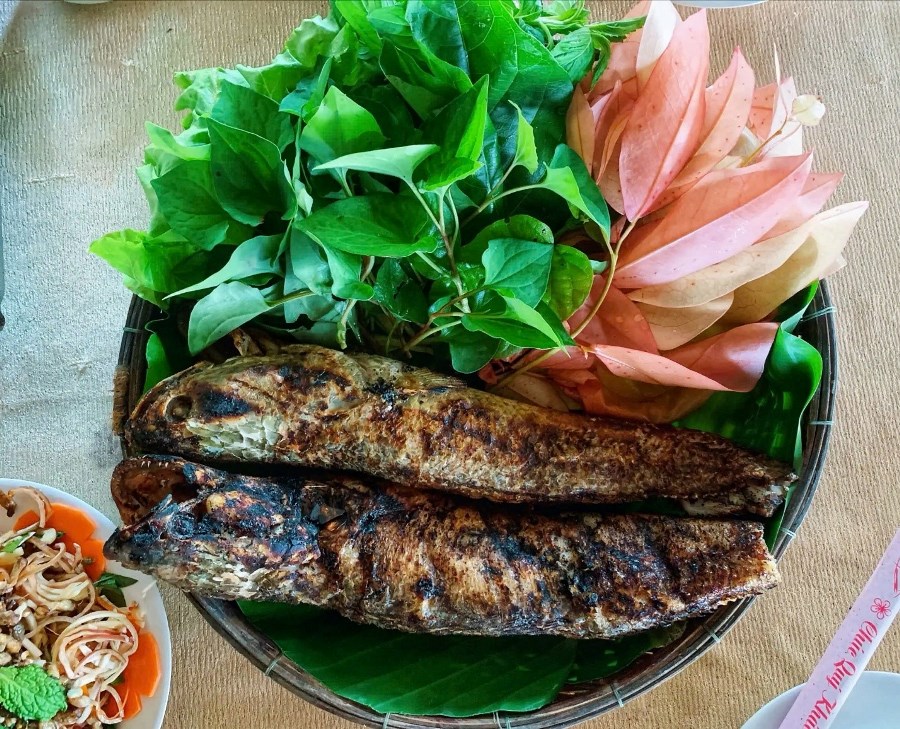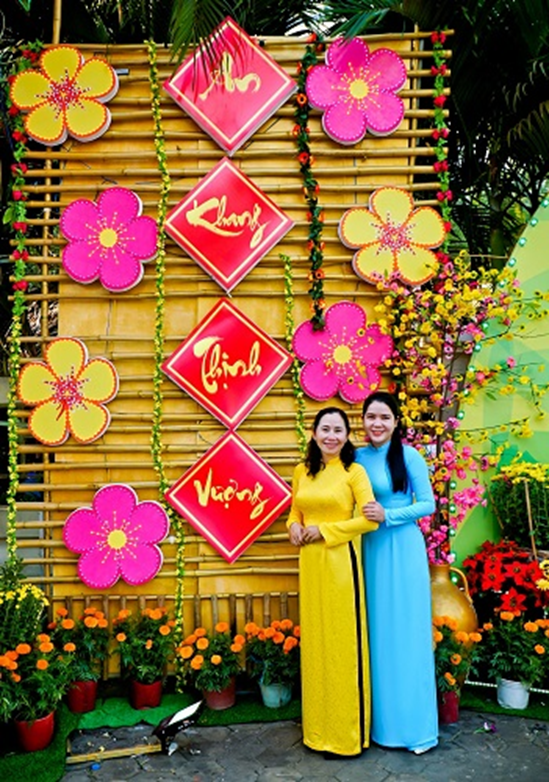
In order to have its grace today, the Ao Dai has had to go through many ups and downs of praise and criticism during the reform process until its perfect shape nowadays. It can be said that the Ao Dai started with two styles: the four-part dress and the five-part dress. The four-part dress is sewn from four pieces of fabric, the two pieces of fabric behind are connected in the middle of the spine, in the front are two flaps of dress without buttons; when the women wear Ao Dai, they can set loose or tie the two flaps together. The five-part dress is also sewn like the four-part dress, only the left front flap is sewn together from two pieces of fabric, making it twice as wide as the right one. It's outside, called the major flap, putting over the right flap inside (which is the minor flap).
Realizing that the traditional dress had many limitations, especially it was not suitable for the climate and physique of Vietnamese women, so in the 1930s, artist Nguyen Cat Tuong reformed the traditional Ao Dai to make it more trendy and beautiful. He made remarkable statements when advocating for the reform of women's clothing: "Clothes are used to cover the body, but it can be like a mirror reflecting the intellectual level of a country". Therefore: “First of all, it must be suitable with the climate of our country, with the weather of the seasons, with the work, with the framework, with the size of each person's body; After all, it should be neat, simple, strong, and have a polished aestheticism. But no matter what, it must have its own personality of the country. You are Vietnamese women, so your clothes must have a unique look so that others will not mistake you for foreign women…” (2).
With this point of view, painter Cat Tuong in turn released many new styles of clothes. Much of this innovative costume, especially the Ao Dai, had many influences from Western culture. Ao Dai designed by artist Cat Tuong, also known as Lemur Ao Dai, is based on the modern shape of Ao Dai which was released in the late 1920s. In terms of shape, Lemur's dress is cut around the body, tighter in the upper body to show off the soft curves of the wearer; the flaps of the dress are cut down to avoid slipping when wearing. Nguyen Cat Tuong said that the bra flap inside the five-part dress before was both very annoying and very unnecessary; so he minimized the minor flap to a very small part for buttoning. Artist Cat Tuong also boldly added more details to the costume. For the collar, he completely abandoned the old way of the citadel (standing collar) to replace it with various types of curving lines (petal-shaped borders), lotus petals, blades; curving collar, fringing collar, round collar. He also abandoned the cross-sleeve stitching and sewed the sleeve to the body part at the armpit; instead of narrow sleeves, he made the dress with puff shoulders, puff cuffs, ruffles, or flower-shaped, shrimp-tailed shaped, chisel-shaped cuffs, etc. The long pants can be replaced by button-down or side-buttoned pants or the tight-fitting trouser leg band from the hip to the knee and then down to the hem of the pants, the part is spread out like a speaker.
In terms of color, Nguyen Cat Tuong does not like dark brown colors and he also says no to flashy colors that have been hastily introduced into modern outfits such as saffron yellow, pomegranate red, sapphire blue, orange, purple ink, etc. Lemur Ao Dai often has gentle, elegant, and bright colors such as pastel pink, light and soft blue, light sky color, light sea color, pale yellow; gray with blue smoke and dark jade; brown with human skin brown, milk coffee brown, etc. Light colors are bordered by a strip of darker or brighter fabric to enhance the bodice. It can be said that color is the most delicate part of a Lemur dress. Therefore, the Lemur dress quickly conquered modern women thanks to its elegant and youthful appearance (3).
Along with the Lemur Ao Dai, there was another reform trend in Hanoi in the years 1930-1954, designed by artist Le Pho and some of his friends, including artist Cat Tuong. This type of Ao Dai also basically consists of two flaps, sewn to fit the body and avoid exposing the waist, the flap of the Ao Dai is usually about 20cm higher than the hem of the pants. Some small changes such as plastic or metal buttons are very common, so we no longer see the old cloth button. The most popular latter is the beautiful round pearl button.
From 1950 to 1960, another trend of Ao Dai appeared in Saigon. Saigon Ao Dai was often sewn with sleeves at the shoulder or sewn in a raglan sleeve - that was, the seam of the sleeve and the body part of the dress was a diagonal line from the bottom of the collar to the armpit to prevent the armpits from shrinking. The dress was sewn to fit the upper body and waistline, but from the waist down, the flaps were loose. The Saigon Ao Dai is the most flattering dress to wear and was also an extremely skillful blend of tradition and modernity.
In the last two decades of the twentieth century, the Ao Dai did not change much in terms of design, mainly shaped with a common design, which was the synthesis of the Hanoi Ao Dai and Saigon Ao Dai. It could be considered that this was the period when the Ao Dai stabilized (4).

A beautiful girl in Ao Dai. Photo: DUY KHOI
Therefore, for a long time, overcoming many challenges of time, along with the enthusiasm, effort, and wisdom of many artists and designers, the first of which must be mentioned is artists Cat Tuong and Le Pho, the modern Ao Dai has become stable and popular all over the country. Talking about this reform, Professor Tran Ngoc Them commented: Due to the influence of exchanges with the West since the 30s of the twentieth century, the traditional Ao Dai was gradually improved into a more modern and beautiful Ao Dai than ever. Starting from the initiatives of two artists Le Pho and Cat Tuong, with refinement, addition, and modification, the modern Ao Dai has become a collective creation. It excellently combines the tradition of our country with Western cultural influences. In addition to significant strides in the way of enhancing the direct flaunt of Western-style body beauty (…), the modern Ao Dai also inherits and highly develops the delicate and discreet style of our tradition. Thanks to that, the modern Ao Dai makes the woman wearing it in general and from the front look very discreet, dignified but still equally attractive. If we look at it from the side, it becomes even more attractive. It is this subtle and discreet eroticism that both meets the requirements of the modern world and maintains the national identity. Therefore, in a short time, the modern Ao Dai has been popularized. It has become widely popular not only in our country but also beyond the borders of the nation and has become a symbol of Vietnamese traditional clothes (5).
It can be said that Ao Dai is a blend of tradition and modernity. Originally shaped through the Westernization movement, Ao Dai still carries the spirit of reform and the modern breath of the twentieth century. The minimalism of lines and colors, which was the result of oppression under feudalism, proved to be very suitable for modern tastes. These things have made the Ao Dai highly adaptable, becoming the most successful outfit in the history of Vietnamese women's clothing (6).
Source: Can Tho News - Translated by Hoang Dat







